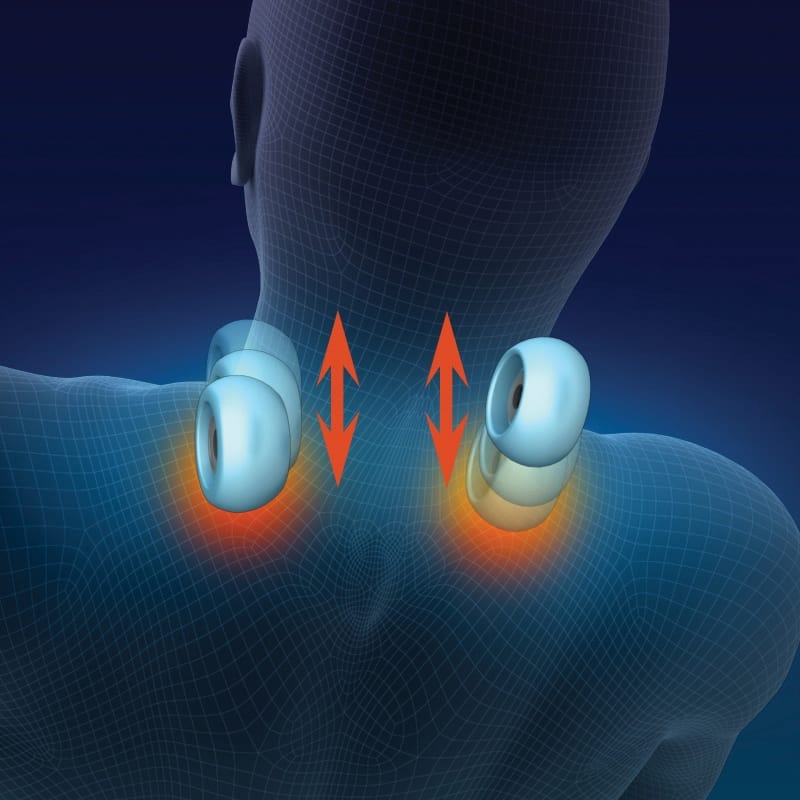Just about all full-body massage chairs claim to have some form of body scanning.
If you have read any other articles on body scanning they tell you why it exists which should be obvious. But they don’t tell you how it works because, well, they don’t know.
As someone who has been in the massage chair industry for over a decade, I’ve sat in, worked on, torn apart, and fixed dozens of models from multiple manufacturers. So here’s how body scanning works.
There are 2 types of scanning, both involve height. None involve weight or width.
- Back Scanning
The mechanism in the back of the chair that does all the rolling, kneading, tapping, and pushing will have a sensor that detects pressure. As it rolls up/down the back it will reach the top of the shoulders and detect no pressure. This will be the top of its massage cycle and will stop at this point depending on the individual’s height. Since every person’s bottom is in the same spot on the chair, the back mechanism may only measure the top portion or top 1/2 of the back. It’s much more simple than you might think. They are not capable of measuring width or body shape. Not all chairs have the same accuracy so most come with ways to either override the scan or make subtle adjustments which I’ll go over later. - Leg length scanning
Massage chairs that have a foot massage fall into 3 categories. Motorized movement, spring movement, and mechanical scanning. Since leg length varies by height, the chair ottoman has to accommodate in some way.
-
- Some chairs have a button on the remote that will extend or retract the ottoman from its default position allowing you to set the distance from near to far. This is motorized movement.
- In other chairs, you will push with your feet to extend the ottoman. The amount of pressure needed to extend the ottoman varies but most are gentle enough that even a child could do it. These are spring movements.
- In the last group, the ottoman will extend and then retract on its own until it senses pressure or push back from the feet and stop. This is mechanical scanning.
So which of all the scanning options above are the best?
Personally, I’ve never seen a 2D massage chair whose scanning feature is even remotely accurate. This makes sense since the mechanism operates on a flat plane.
3D/4D massage chairs are far more accurate because they can detect forward pressure. Some are so accurate they can detect spine curvature and adjust massage strength across a much greater surface area. These are almost always the most expensive chairs.
Motorized ottomans are a cool feature but you may find yourself going back and forth to the remote for adjustment, and they add weight and cost to a chair.
Spring movement is the most common and allows the user to adjust the position by simply pushing. Spring systems also allow for much greater distance and much taller users.
Mechanical ottoman scanning is fairly accurate for the most part but I’ve found they almost all need a good amount of pressure on the bottom of the foot before they stop retracting. I need to consciously push before the scanning stop point which kind of negates its function. And again it adds weight and cost to a chair.
Scan adjustments and overrides.
In just about any massage chair that has a scanning feature you can jump in and select a manual or automatic program before the chair scans and you will have overridden this function. But you may find the chair will roll all the way to the back of your head and tapping the back of your head is no fun.
As previously stated not all chairs have perfect scanning capabilities or scan the way you want. Most of those will have a “shoulder position” button on the remote. For me, I like the rollers to stop about 2″ above the scan results so they hit my neck a little higher. Two pushes on the “shoulder position up” takes care of that.
Infrared scan and acupoint detection.
An “infrared scan” claims to detect body heat for its scan feature. I’ve pulled these chairs apart and for the life of me, I can’t find any “infrared” detectors. Only one manufacturer has given me a straight answer and they admitted the chair was discontinued because it didn’t really work. Mechanical scanning was easier, less expensive, and more accurate.
Once a chair has done a scan, high-end chairs have anywhere from a few to several hundred stored patterns of acupressure points. Once a scan is completed it applies one of these patterns of acupressure data to the individual’s scanned height. They don’t necessarily detect an individual point but they have a pretty good idea based on the height scan.



